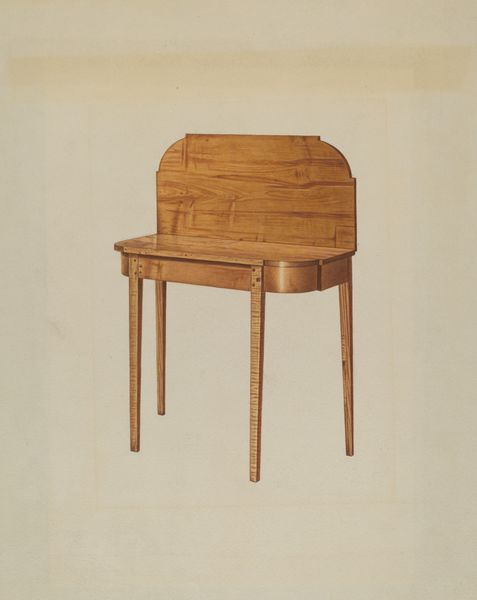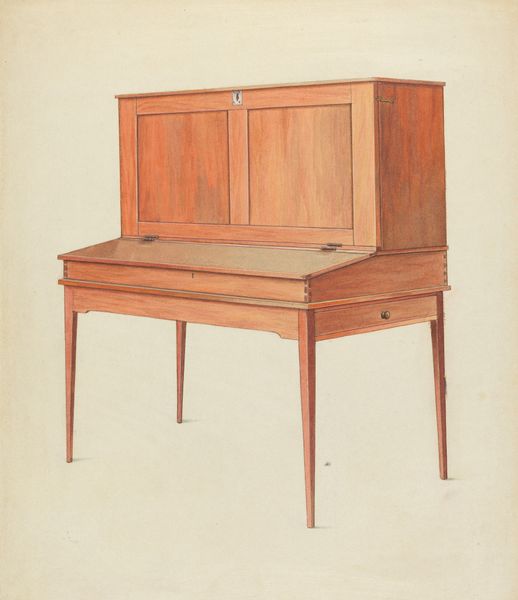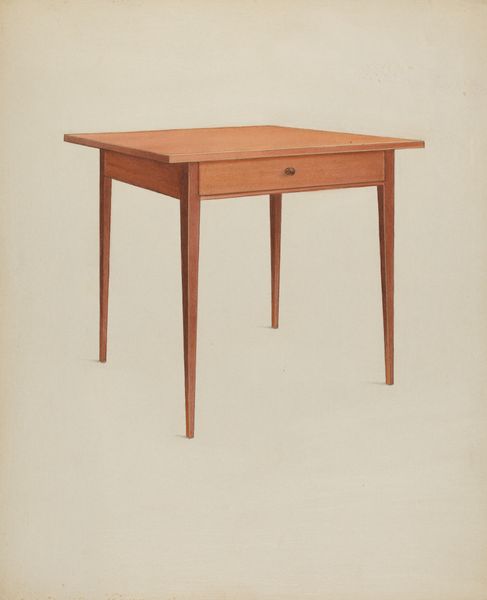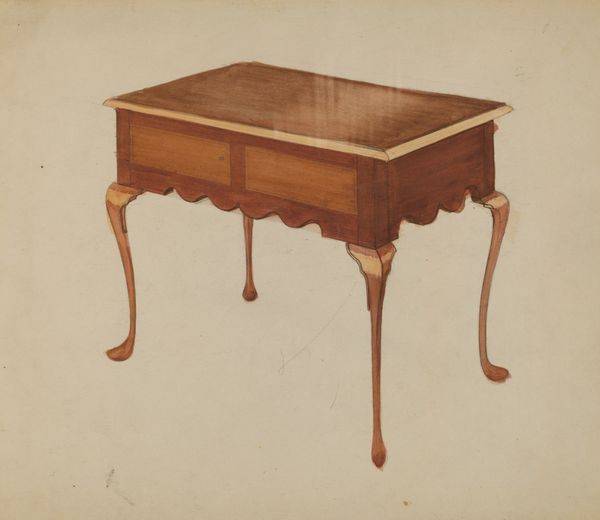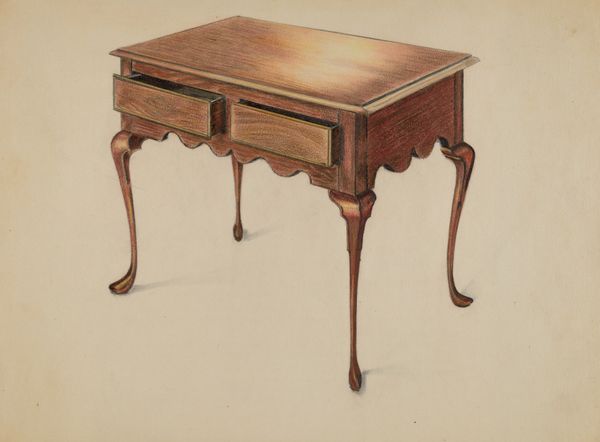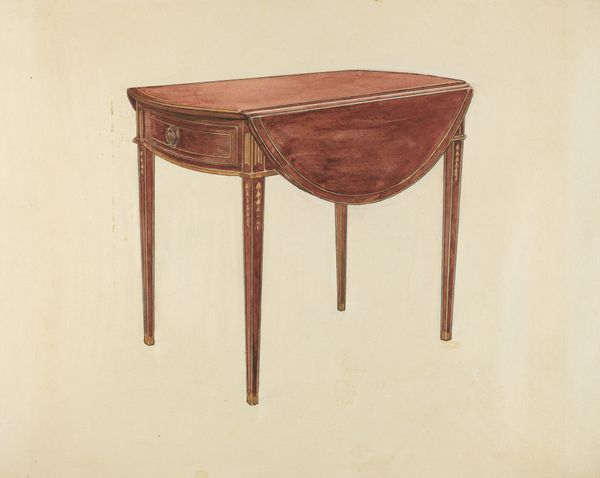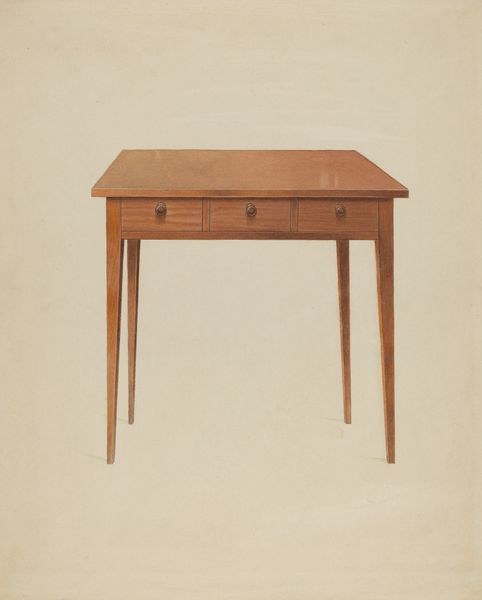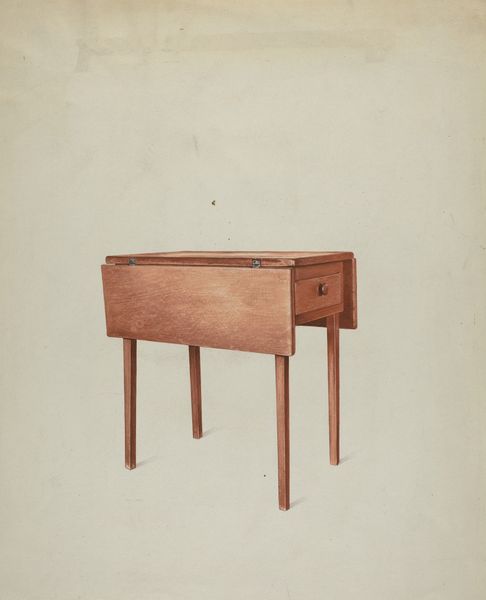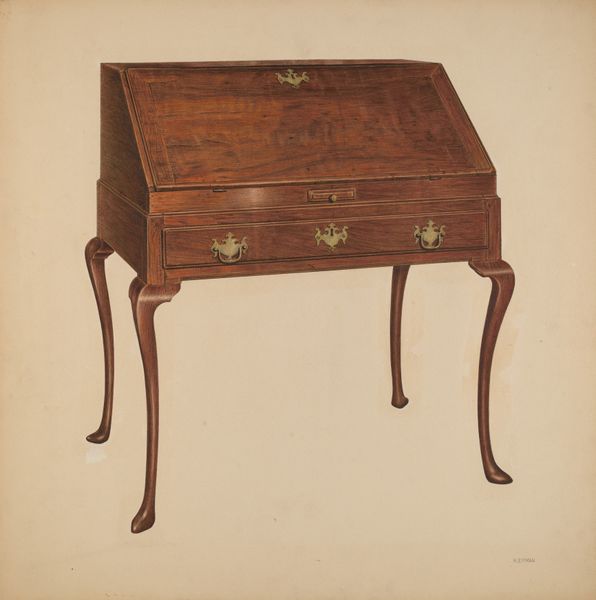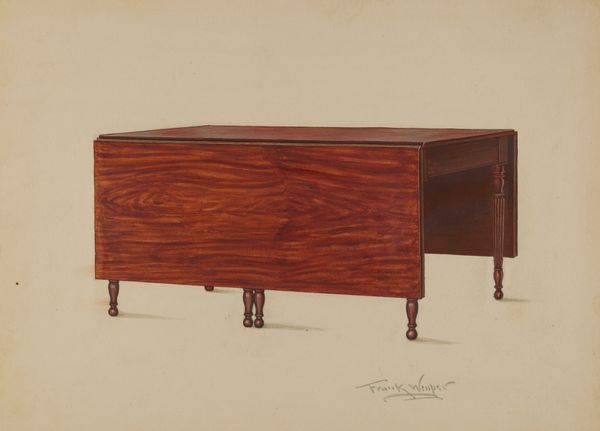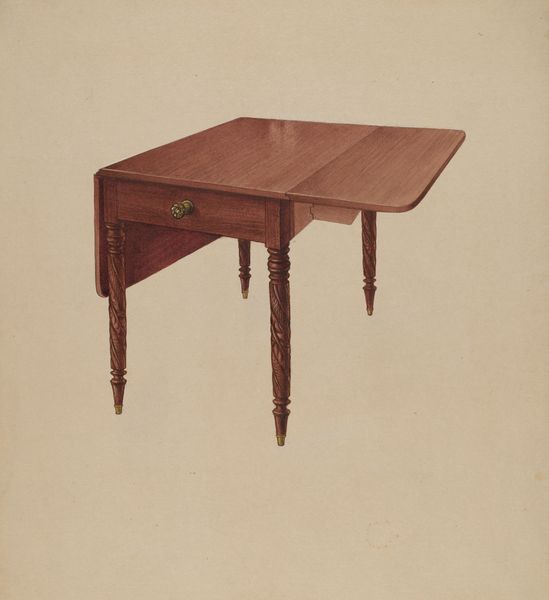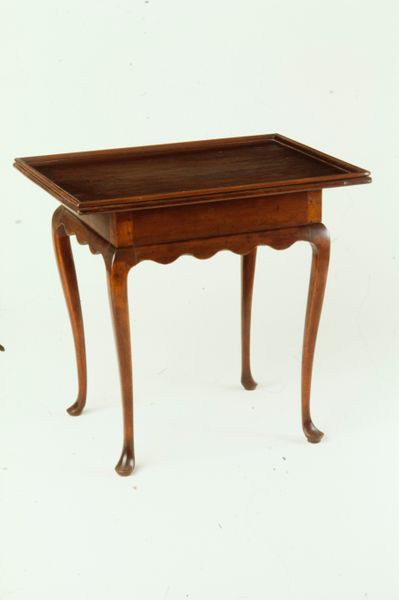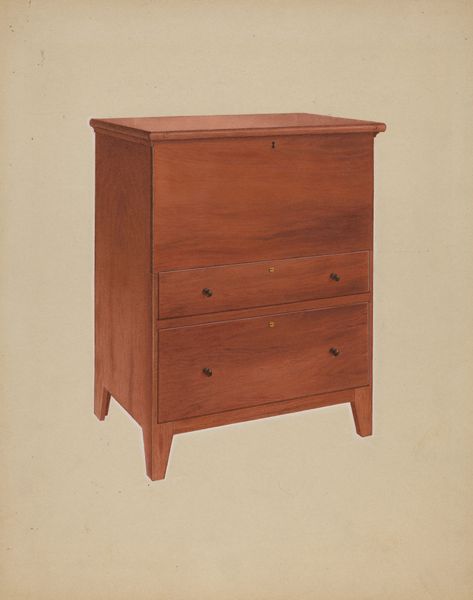
drawing, watercolor, wood
#
drawing
#
watercolor
#
wood
#
academic-art
#
watercolor
#
realism
Dimensions: overall: 35.7 x 24.4 cm (14 1/16 x 9 5/8 in.) Original IAD Object: 33"high; 36"long
Copyright: National Gallery of Art: CC0 1.0
Curator: Here we have “Table,” a watercolor drawing completed around 1936. It's quite a striking depiction, isn't it? Editor: It's strangely… calming. So precise, so controlled. Makes you want to set a cup of tea down, even though it’s just a picture. A silent promise of afternoon delight. Curator: Note the artist’s commitment to rendering form. The cylindrical table legs and how they contrast with the right angles and flatness of the tabletop, almost classical in its pursuit of perfect geometry. Editor: The light's really interesting, too. That stripe along the front – it gives it a surreal, almost hyper-realistic quality. Like those dreams where everything is just a little TOO sharp, a bit too polished. Curator: It adheres quite faithfully to the dictates of realism but simultaneously suggests something more stylized in its approach to surface texture and light. Observe how the grain of the wood is suggested using repeated striations in contrasting pigments, rather than mimicking the variations found in wood itself. Editor: Absolutely. It’s as if they're trying to capture the *idea* of wood, the essence of 'tableness,' rather than a literal rendering. There’s a subtle dance happening between what’s seen and what’s known. A perfect still life that is not alive in the traditional sense. Curator: Such careful composition, this watercolor drawing encourages us to ponder the beauty in utility, or, the structure, of something so fundamental as a table itself. The intent may have been simply documentation or, even design. Editor: That discipline really radiates! There’s a lot to admire about how objects become iconic… they carry our mundane experiences into something extraordinary. I guess this "Table" speaks volumes by its presence alone. Curator: Indeed. Its visual appeal may provoke us to think critically about functional form as an act of human expression in its own right. Editor: I see this table sitting in an abandoned house in one of the small forgotten towns, as a relic. A place where memories wait for life again. That’s what art can do, right?
Comments
No comments
Be the first to comment and join the conversation on the ultimate creative platform.
